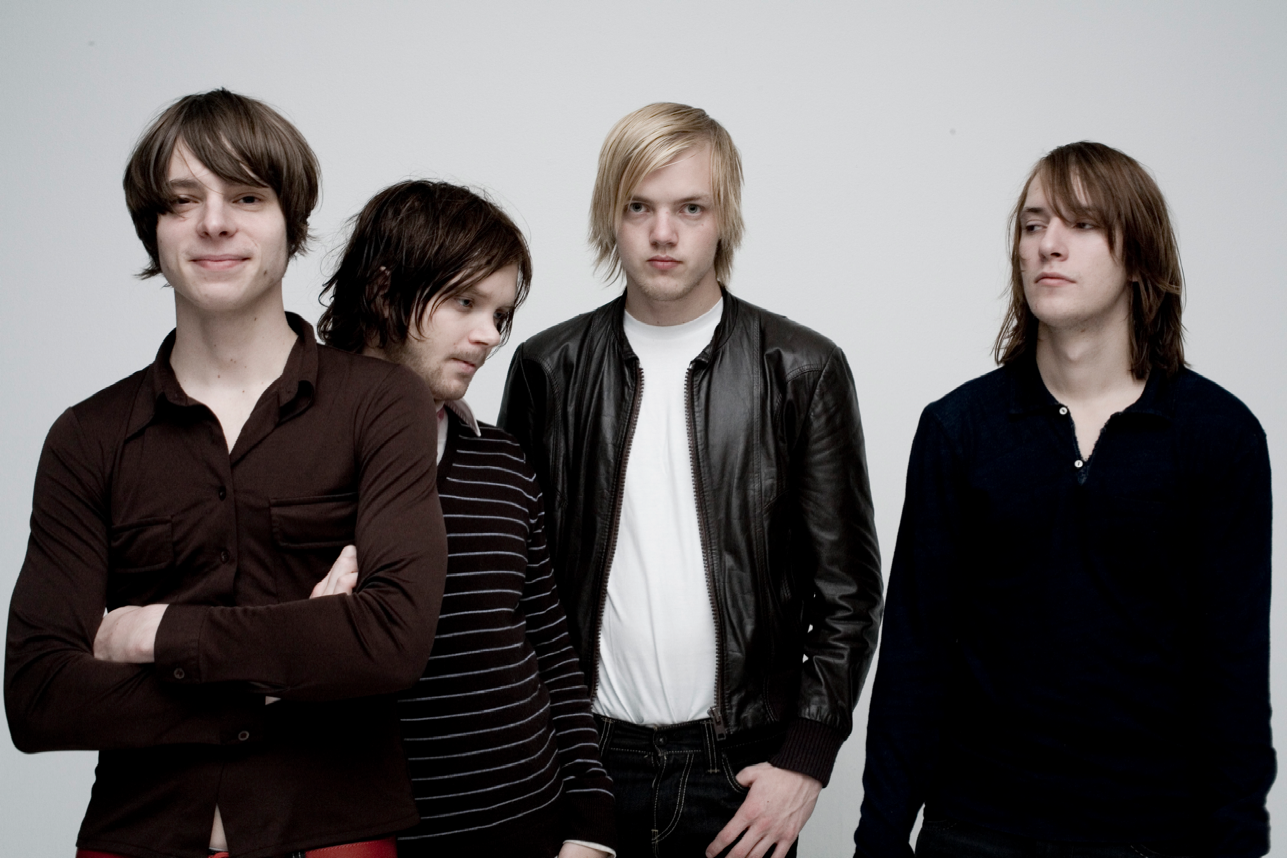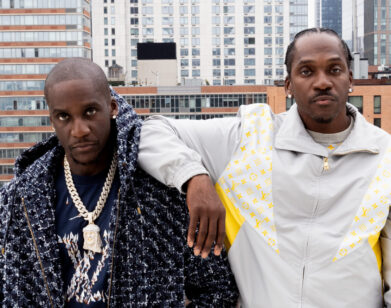How 120 Days Did a 180

It’s been five years since Norwegian band 120 Days hit the airwaves with new music. In the past, the band (originally known as “The Beautiful People”) was signed to Vice Records and has won two Norwegian Grammys, but more recently, the group, consisting of Jonas Dahl, Arne Kvalvik, Kjetil Ovesen, and Ådne Meisfjord, took some time off from music and from each other.
The band’s evolution over the past few years led to their latest album, II, which spews electric emotion and crosses over into many different genres. Its first single, “Osaka,” reflects the darker, more transient feelings on the record—their first on Club Mod/Modular, it’s a fresh take for the band, after a decade together. The sophomore album is set to debut on March 6 in the US.
We spoke with Ådne Meisfjord on discovering electronic rock, making schizophrenic music, and taking time to reflect on life.
ILANA KAPLAN: How come you guys were on a five-year hiatus, if you don’t mind me asking?
ÅDNE MEISFJORD: I’m kind of used to the question by now. I think it just had to do with a lot of stuff. We have been playing in the band for a long time. After the album, we had done a couple of years of extensive touring, and then we got back together and went into the studio. It was just time to take a break. We were tired of being in the same room. It wasn’t the best environment to make an album, basically. I guess we all just wanted to do some other stuff for a while.
KAPLAN: Who have been some of your influences over the years? How have they evolved through your music?
MEISFJORD: I guess when we started out… we started out as pretty basic jangly indie-pop band, with drums, guitars, bass and keyboards. This was in our hometown Kristiansund. We all live in Oslo now, but we’re all originally from the area around Kristiansund. You’ve never really heard about it. So don’t worry about it. So, I guess back then growing up it would be The Velvet Underground, The Stooges and cool rock bands, basically. Then, later on discovering Kraftwerk and really getting into ‘70s German rock like Neu! and Can and that stuff. I think how it’s evolved over time is that it’s become more and more eclectic. I think that these days you put on an old Detroit techno first and then follow it up with Burt Bacharach. I’m really schizophrenic these days.
KAPLAN: Do you guys do the songwriting together, or does one of you take the lead on that?
MEISFJORD: Actually, it depends. It’s not like we have a strict way of doing it that we always stick to. I mean, for the most part, we try to come up with stuff together, just jamming out. Lots of the songs on the album started out as very loose jam sessions that kind of evolved from there. It’s hard to have a complete democracy in a band. I don’t think that it’s necessarily good for the music either. I would say it’s a well-functioning anarchy, rather than a democracy. It’s not like everybody gets their 25 percent, but all of us are in there.
KAPLAN: How did you guys decide on 120 Days as a name?
MEISFJORD: Well, in the very beginning we were called “The Beautiful People.” We released two EPs in Norway with that name. Then we were signed to labels outside of Norway, and we were told that we had to change the name because there were lots of different “Beautiful People” people out there: “Beautiful People” swimsuits, and a very successful Marilyn Manson cover band. Changing the name was actually one of the hardest things we had to do, because we’re really, really bad at that. That’s also why we called our second album, II. In the end, we made a decision that we were going to be called 120 Days after the novel by Marquis de Sade, who is an old French writer.
KAPLAN: What made you guys decide to make an album after that time off?
MEISFJORD: I think we always knew that there was more music left in the group and that we would sooner or later have to get it out and tap into that again. I guess it was just a matter of time before it felt right to do it again. Looking back on it, it’s not like it was one decisive moment where we called each other up and said, “let’s do it.” It was more like a gradual thing. We met up for a beer. Maybe two of us were at the rehearsal space at the same time. These things just kind of had to happen. I think for us it was important that it had to take as much time as it needed. It had to feel right. It’s difficult to explain.
KAPLAN: Will you guys be touring this year?
MEISFJORD: Yes! We’re doing some shows in March and April. We’ll be pretty much all over Europe for a start.
KAPLAN: Do you know who you’re touring with yet?
MEISFJORD: No. Not yet. Well I guess some of it will be our own slots, and then some won’t.
KAPLAN: How did you guys meet?
MEISFJORD: Like I said, we’re from the area around Kristiansund, which is on the Northwest coast of Norway. It’s a really small town, so we all kind of met in school. The four of us met when we were 15 or 16. Something like that. We’re from a really small, coastal town in Norway. It kind of makes you gravitate towards the people that are like-minded and like the same strange stuff that not everybody is necessarily into in Kristiansund.
KAPLAN: Who have you performed with that really resonated with you?
MEISFJORD: I guess we played this show in Japan with The Orb’s Adventures Beyond the Ultraworld, which was a really cool thing, being able to do that. That resonated. That was good. I don’t know if I see it so much as part of a scene or anything maybe. In Oslo, bands get together. This is also a pretty small city, like, less than a million people living here. There are some cool Norwegian bands that we play with. And anytime I play in Serena Maneesh, which is one of the best other bands from Norway. I’m working on a remix for a band called Pirate Love, which is also pretty cool. There are also some other underground bands that haven’t released anything yet that I think are really good. The Oslo scene is looking kind of healthy at the moment. It’s good.
FOR MORE ON 120 DAYS, VISIT THEIR MYSPACE. II IS OUT IN THE STATES MARCH 6.






